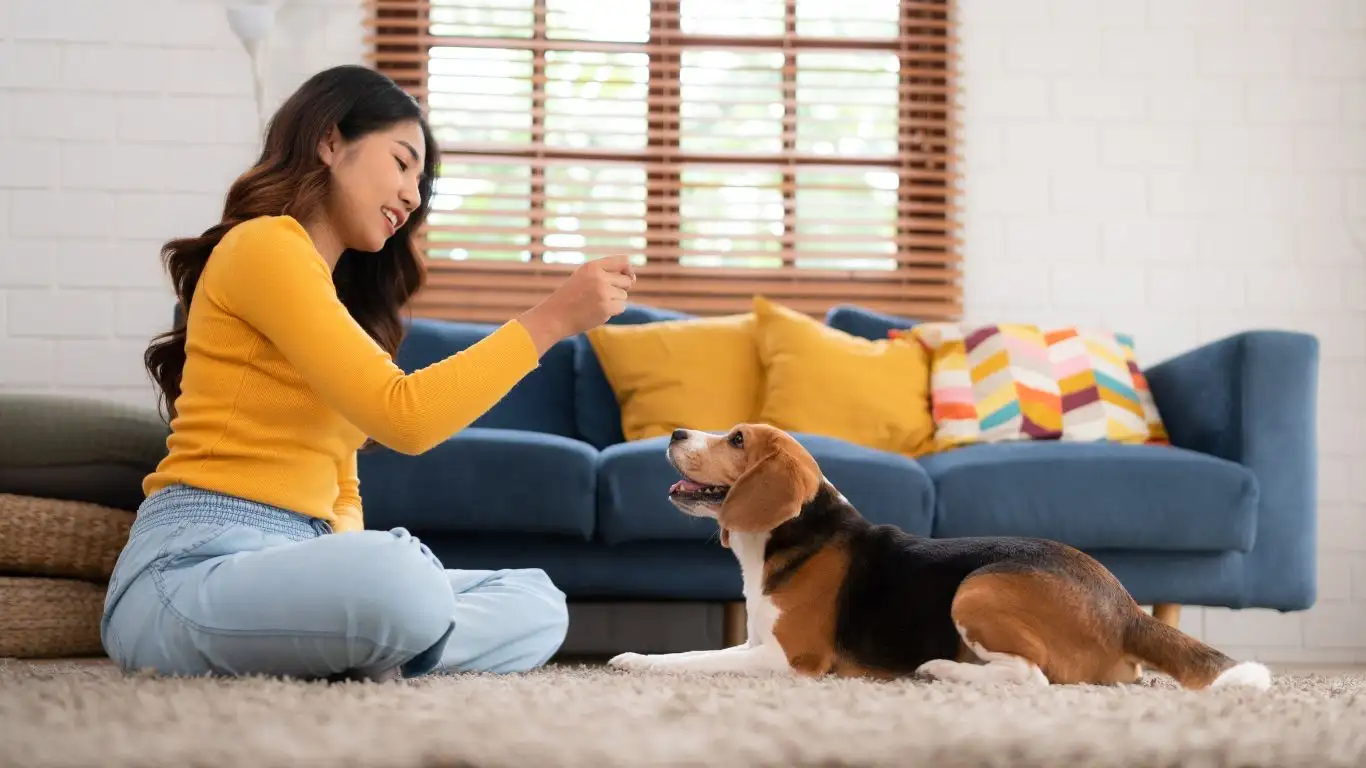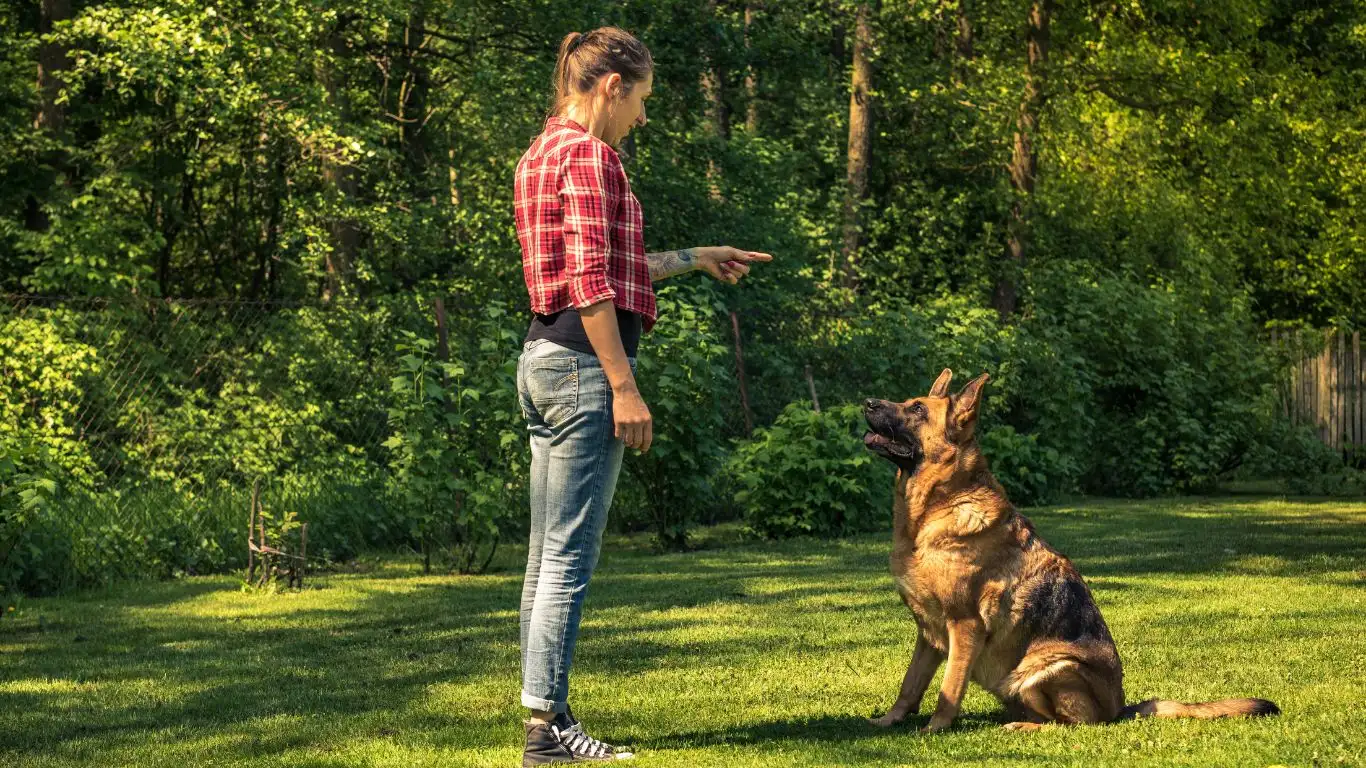Keep Your Dog Off the Bed at Night – Easy & Proven Training Tips!
Teaching your dog how to train a dog to stay off the bed at night can feel like an uphill battle, especially if they’ve already claimed your bed as their personal throne. Trust me, I’ve been there! As a Certified Professional Dog Trainer (CPDT-KA), I’ve worked with countless clients struggling with this very issue. The good news? With the right approach, a mix of consistency, patience, and positive reinforcement, you can successfully reclaim your sleeping space—without guilt or frustration.
Why Do Dogs Love Sleeping on Your Bed?
Before we dive into solutions, let’s talk about why your furry companion insists on cozying up in your bed. Understanding their motivation makes training much easier.
- Comfort & Warmth: Your bed is soft, warm, and smells like you—what’s not to love?
- Security & Bonding: Dogs are pack animals, and sleeping close to you gives them a sense of security.
- It’s a Habit: If your pup has been allowed on the bed before, they see no reason to stop.
- They Love You! Many dogs simply want to be near their favorite human, especially at night.
Setting Clear Boundaries: The First Step
One of the biggest mistakes I see dog owners make is sending mixed signals. If your dog is sometimes allowed on the bed and other times not, they’ll be confused—and let’s be real, who can blame them?
Establish a “No Bed” Rule
Make it clear from day one that the bed is off-limits. Consistency is everything. If you occasionally invite them up, they’ll assume the rule is flexible.
Provide an Alternative Sleeping Spot
Dogs need a comfy place to sleep, just like us. If their designated bed is an afterthought, they’ll pick your bed every time.
- Choose a high-quality dog bed with adequate support.
- Place it near your bed if your dog struggles with separation anxiety.
- Use a soft blanket with your scent to make it more inviting.
Training Techniques: Teaching “Off” and “Go to Your Bed”
Now that we’ve set the stage, let’s get into the actual training. I’ve used these methods with my own dogs and dozens of clients—they work!
The “Off” Command
This is a must-know cue for any dog. It teaches them to get off furniture (or anything) on command.
- Wait for your dog to get on the bed.
- Say “Off” in a firm but calm voice.
- Guide them down gently if needed, using a treat as motivation.
- Once all four paws are on the floor, reward immediately with praise and a treat.
Teaching “Go to Your Bed”
This command helps redirect them to their designated sleeping area.
- Stand near their bed with a treat.
- Say, “Go to your bed” and lure them onto it.
- Once they step onto the bed, praise and reward.
- Repeat daily, gradually increasing the time they stay on the bed before getting the reward.

What to Do If Your Dog Keeps Jumping on the Bed
Even with training, some pups are persistent. If yours keeps sneaking onto the bed, try these additional strategies:
Block Access to the Bed
Sometimes, removing temptation is the easiest fix.
- Use a baby gate or close the bedroom door.
- Place an object (like pillows) on the bed to make it less inviting.
Ignore the Behavior
If your dog jumps on the bed for attention, don’t give in. Avoid eye contact, don’t talk to them, and calmly direct them to their own bed instead.

Patience and Consistency Win the Battle
Every dog learns at their own pace. Some will catch on quickly, while others might need extra reinforcement. The key is to stay patient and consistent. Your dog isn’t trying to be stubborn—they’re just following old habits.

Dealing with Nighttime Whining and Resistance
Okay, so you’ve set the rule—no dogs on the bed. You’ve got their comfy dog bed all set up. But what happens when your pup stares at you with those big, pleading eyes or starts whining in the middle of the night? This is where many owners cave, and trust me, I get it! That guilt is real. But staying strong here is key to success.
Why Do Dogs Whine at Night?
Dogs communicate through body language and vocalizations. If your pup is whining, it’s not just to test your patience—they’re trying to tell you something. Here are some common reasons:
- They Miss You: If your dog has been sleeping with you for a while, they’re simply not used to the change yet.
- Anxiety or Fear: Some dogs struggle with being alone, especially if they’ve never been separated at night.
- They’re Uncomfortable: Their new sleeping spot might not be cozy enough.
- Bathroom Needs: Puppies and senior dogs, in particular, may need a midnight potty break.
How to Stop the Whining Without Giving In
Here’s what I tell my clients: responding to whining in the wrong way can reinforce the behavior. If your dog learns that whining = getting back on the bed, guess what? They’ll whine even more next time.
- Ignore the Behavior: If your dog is whining but doesn’t need to go outside, do not respond. No eye contact, no speaking—just pretend you’re asleep.
- Use a Comforting Item: A shirt with your scent or a cozy blanket can make their bed feel safer.
- Gradual Distance Training: If your dog has severe separation anxiety, start by placing their bed next to yours and gradually move it farther away.
- Calm, Not Cuddles: If your dog is truly distressed, calmly reassure them but don’t bring them back to the bed. Give a gentle pat and direct them back to their own spot.

Creating a Consistent Nighttime Routine
Dogs thrive on routines, and establishing a bedtime pattern can make training so much easier. If your dog knows what to expect, they’re less likely to resist the change.
Step-by-Step Bedtime Routine
Try this structured routine to help your dog transition smoothly:
- Exercise Before Bed: A tired dog is a well-behaved dog. Take them for a walk or engage in a short play session before bedtime.
- Final Bathroom Break: Make sure they’ve had one last potty trip before settling in.
- Calm, Quiet Time: Avoid exciting activities right before bed. Keep things peaceful to signal it’s time to wind down.
- Direct Them to Their Bed: Guide your dog to their sleeping spot, using the “Go to your bed” command.
- Give a Treat or Chew: A special bedtime treat can create a positive association with sleeping in their own bed.
Stick to this routine consistently, and soon your dog will naturally follow the bedtime pattern without protest.
Using Training Tools to Reinforce the Rule
If your dog is particularly stubborn about staying off the bed, a few extra tools can make the training process easier.
Dog Beds with Raised Sides
Some dogs feel more secure in a bed with bolstered sides, similar to a den. If your pup refuses their flat bed, try upgrading to a more enclosed design.
Training Mats and Barriers
If your dog keeps sneaking onto the bed when you’re not looking, consider deterrents like:
- Pet-Safe Training Mats: These mats make an uncomfortable surface (think gentle vibrations or sounds) when stepped on.
- Physical Barriers: Place a laundry basket or other object on the bed when you’re not using it.
- Crate Training (Optional): If your dog is crate trained, using the crate at night can reinforce the sleeping boundaries.

Addressing Special Cases: Puppies, Seniors, and Rescue Dogs
Not all dogs learn at the same pace. Puppies, older dogs, and rescues may need some special considerations.
Training Puppies to Stay Off the Bed
Puppies are naturally curious and often want to be close to their humans for warmth and comfort. The key with puppies is to start training early and be extremely consistent.
- Use a puppy playpen if needed to keep them from wandering onto the bed.
- Make their sleeping area as inviting as possible—soft blankets, a warm toy, and a calming nightlight can help.
- Expect some setbacks. Puppies have short attention spans, so be patient and persistent.
Older Dogs and Comfort Issues
Senior dogs may have joint pain or arthritis, making a soft sleeping surface essential. If your older dog keeps jumping on your bed, check if their own bed is comfortable enough.
- Use orthopedic dog beds for better joint support.
- Ensure their sleeping area is warm and draft-free.
- If they struggle with mobility, place their bed close to where you sleep for reassurance.
Helping Rescue Dogs Adjust
Rescue dogs often come with a history of stress, neglect, or past traumas. Sleeping on your bed might be their way of seeking comfort and security.
- Use a slow and gentle approach—rushing the process can cause anxiety.
- Give them a special “safe space” in your room with cozy bedding.
- Reinforce positive behaviors with praise, not punishment.

Common Mistakes to Avoid When Training Your Dog to Stay Off the Bed
Even with the best intentions, it’s easy to slip up during training. I’ve seen plenty of dog owners unintentionally reinforce bad habits, and trust me—I’ve made a few mistakes myself over the years. Here are some common pitfalls and how to avoid them.
Being Inconsistent
One night, you let your dog sleep on the bed because you’re too tired to deal with the whining. The next night, you tell them “off.” This sends mixed messages and confuses your dog. Consistency is the golden rule—if the bed is off-limits, it must be off-limits every single night.
Giving in to Whining or Begging
Dogs are smart. If whining or pawing at the bed gets them what they want, they’ll keep doing it. Ignore attention-seeking behaviors and only reward them when they settle in their own bed.
Not Making Their Sleeping Area Comfortable Enough
Would you sleep on a thin, scratchy mat if a plush, warm bed was available? Probably not! If your dog’s bed isn’t cozy, they’ll naturally prefer yours. Invest in a high-quality dog bed with proper support and warmth.
Not Exercising Them Before Bed
A dog with pent-up energy is more likely to be restless and try sneaking onto the bed. A good walk or play session before bedtime can help them settle down.

Reinforcing Good Sleep Habits Over Time
Once your dog is consistently staying off the bed, it’s important to maintain those good habits. Here’s how to keep the progress going:
Occasionally Reward Them
Every now and then, give your dog a treat or extra praise when they sleep in their bed all night. Reinforcement keeps them motivated.
Stick to the Routine
If you travel or rearrange your bedroom, try to keep your dog’s sleeping area as familiar as possible. Changes in environment can sometimes lead to setbacks.
Redirect Any Sneaky Behavior
If your dog starts testing boundaries again (trust me, they will at some point!), calmly redirect them to their bed without making a big deal out of it.

When to Seek Professional Help
Most dogs can be trained to stay off the bed with patience and consistency. But if you’re dealing with severe separation anxiety, excessive nighttime barking, or other behavioral issues, it may be time to consult a professional dog trainer or behaviorist.
Signs Your Dog Might Need Extra Help
- They panic or become destructive when not allowed on the bed.
- They show aggression when asked to get off.
- They refuse to settle down in their own bed, even with training.
Every dog is different, and sometimes deeper behavioral issues need expert guidance. Working with a certified trainer can help tailor a plan that fits your dog’s specific needs.
Final Thoughts
Teaching your dog to stay off the bed at night isn’t just about setting rules—it’s about creating a structured, loving environment where they feel secure in their own space. With patience, consistency, and the right training approach, your dog will learn that their bed is just as great (if not better!) than yours.
References
- ASPCA – Understanding Dog Behavior
- American Kennel Club – Dog Training Tips
- Humane Society – Positive Reinforcement Training
Disclaimer
This article is for informational purposes only and should not replace professional veterinary or behavioral advice. If your dog is exhibiting extreme distress or aggression, seek guidance from a certified trainer or veterinarian.





